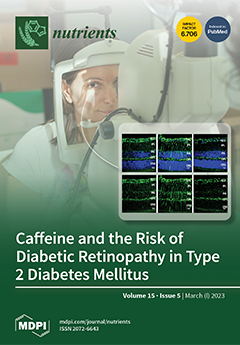Our previous studies have found that caprylic acid (C8:0) can improve blood lipids and reduce inflammation levels and may be related to the upregulation of the p-JAK2/p-STAT3 pathway by ABCA1. This study aims to investigate the effects of C8:0 and eicosapentaenoic acid (EPA) on lipids, inflammatory levels, and the JAK2/STAT3 pathway in ABCA1-deficient mice (ABCA1
−/−) and ABCA1 knock-down (ABCA1-KD) RAW 264.7 cells. Twenty 6-week ABCA1
−/− mice were randomly divided into four groups and fed a high-fat diet, or a diet of 2% C8:0, 2% palmitic acid (C16:0) or 2% EPA for 8 weeks, respectively. The RAW 264.7 cells were divided into the control or control + LPS group, and the ABCA1-KD RAW 264.7 cells were divided into ABCA1-KD with LPS (LPS group), ABCA1-KD with LPS + C8:0 (C8:0 group), and ABCA1-KD with LPS + EPA (EPA group). Serum lipid profiles and inflammatory levels were measured, and ABCA1 and JAK2/STAT3 mRNA and protein expressions were determined by RT-PCR and Western blot analyses, respectively. Our results showed that serum lipid and inflammatory levels increased in ABCA1
−/− mice (
p < 0.05). After the intervention of different fatty acids in ABCA1
−/− mice, TG and TNF-α were significantly lower, while MCP-1 increased significantly in the C8:0 group (
p < 0.05); however, LDL-C, TC, TNF-α, IL-6, and MCP-1 levels decreased significantly and IL-10 increased significantly in the EPA group (
p < 0.05). In the aorta of ABCA1
−/− mice, C8:0 significantly decreased p-STAT3 and p-JAK2 mRNA, while EPA significantly reduced TLR4 and NF-κBp65 mRNA. In the ABCA1-KD RAW 264.7 cells, TNF-α and MCP-1 were increased significantly and IL-10 and IL-1β were significantly decreased in the C8:0 group (
p < 0.05). The protein expressions of ABCA1 and p-JAK2 were significantly higher, and the NF-κBp65 was significantly lower in the C8:0 and EPA groups (
p < 0.05). Meanwhile, compared to the C8:0 group, the NF-κBp65 protein expression was significantly lower in the EPA group (
p < 0.05). Our study showed that EPA had better effects than C8:0 on inhibiting inflammation and improving blood lipids in the absence of ABCA1. C8:0 may be involved mainly in inhibiting inflammation through upregulation of the ABCA1 and p-JAK2/p-STAT3 pathways, while EPA may be involved mainly in inhibiting inflammation through the TLR4/NF-κBp65 signaling pathway. The upregulation of the ABCA1 expression pathway by functional nutrients may provide research targets for the prevention and treatment of atherosclerosis.
Full article






